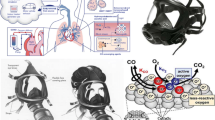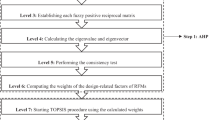Abstract
Air pollution is a serious health problem in almost all developing and developed countries around the world. One component of air pollution dangerous for health is carbon monoxide (CO). The largest source of carbon monoxide is the burning of fossil fuels and peatland fires. The government continues to control pollution through both environmental management and summer pollution control. However, the resulting impact is less than optimal. We conducted a study to test the material used as an alternative respiratory protector in absorbing CO gas. The protective material comprised of a combination of spunbond, meltblown, and activated carbon materials. We carried the study out on a laboratory scale using experimental animals that were subjected to different stages of treatment. The results showed that respiratory protective masks with a combination of activated carbon and spunbond/meltblown materials were better able to inhibit CO exposure (p ≤ 0.001) than respiratory masks without activated carbon. The combination material is thus effective in absorbing CO; it can carry further research out on other harmful gases such as NO and NO2.


Similar content being viewed by others
References
Atrie D, Worster A (2018) Surgical mask versus N95 respirator for preventing influenza among health care workers: a randomized trial. CJEM Journal Club 14(1):50–52. https://doi.org/10.2310/8000.2011.110362
Ba A, Toivola M, Adhikari A, Sivasubramani SK (2006) Do N95 respirators provide 95% protection level against airborne viruses, and how adequate are surgical masks? AJIC 34(2):51–57. https://doi.org/10.1016/j.ajic.2005.08.018
Bernstein JA, Alexis N, Charles B, Leonard Bernstein I, Bernstein JA, Nel A, Peden D, Diaz-Sanchez D, Tarlo SM, Brock Williams P (2004) Health effects of air pollution. J Allergy Clin Immunol 114(5):1116–1123. https://doi.org/10.1016/j.jaci.2004.08.030
Grinshpun SA, Haruta H, Lee S-S, Eninger RM, Reponen T, Roy T, Grinshpun SA et al (2009) Performance of an N95 filtering facepiece particulate respirator and a surgical mask during human breathing: two pathways for particle penetration. J Occup Environ Hyg 2014:37–41. https://doi.org/10.1080/15459620903120086
Guan W-j, Zheng X-y, Chung KF, Zhong N-s (2016) Impact of air pollution on the burden of chronic respiratory diseases in China: time for urgent action. Lancet 388(10054):1939–1951. https://doi.org/10.1016/S0140-6736(16)31597-5
Hayasaka H, Noguchi I, Indra E, Yulianti N, Vadrevu K (2014) Peat- fire-related air pollution in Central Kalimantan, Indonesia. Environ Pollut 195:257–266. https://doi.org/10.1016/j.envpol.2014.06.031
Kagawa (2002) Health effects of diesel exhaust emissions—a mixture of air pollutants of worldwide concern. Toxicology 182:349–353
Kalderis D, Bethanis S, Paraskeva P, Diamadopoulos E (2008) Production of activated carbon from bagasse and rice husk by a single-stage chemical activation method at low retention times. Bioresour Technol 99:6809–6816. https://doi.org/10.1016/j.biortech.2008.01.041
Khayan K, Anwar T, Wardoyo S, Puspita WL (2019) Active carbon respiratory masks as the adsorbent of toxic gases in ambient air. J Toxicol 2019
Lai ACK, Poon CKM, Cheung ACT (2012) Effectiveness of facemasks to reduce exposure hazards for airborne infections among general populations. J R Soc Interface 2011:938–948
Li W, Yang K, Peng J, Zhang L, Guo S, Xia H (2008) Effects of carbonization temperatures on characteristics of porosity in coconut Shell chars and activated carbons derived from carbonized coconut Shell chars. Ind Crop Prod 28(2):190–198. https://doi.org/10.1016/j.indcrop.2008.02.012
Li Y, Wong ÃT, Chung J, Guo YP, Hu JY, Guan YT, Yao L, Song QW, Newton E (2006) In vivo protective performance of N95 respirator and surgical facemask. Am J Ind Med 49:1056–1065. https://doi.org/10.1002/ajim.20395
Mahony J, John M, Sarabia A, Glavin V, Chong S, Webb A, Walter SD (2009) Surgical mask vs N95 respirator among health care workers. JAMA-Express 302(17):1865–1871
Nazir A, Khenoussi N, Hussain T, Abid S, Bilal M, Zubair Q, Amir K (2019) Enhanced filtration and comfort properties of nonwoven filtering facepiece respirator by the incorporation of polymeric nanoweb. Polym Bull, no. 0123456789. https://doi.org/10.1007/s00289-019-03009-1
Kim O-J, Kim S-Y, Kim H (2017) Association between long-term exposure to particulate matter air pollution and mortality in a South Korean national cohort: comparison across different exposure assessment approaches. Int J Environ Res Public Health 14(10):1103. https://doi.org/10.3390/ijerph14101103
Moses Coss P, Cha CY (2011) Microwave regeneration of activated carbon used for removal of solvents from vented air microwave regeneration of activated carbon used for removal of solvents from vented air. J Air Waste Manag Assoc 2011:529–535. https://doi.org/10.1080/10473289.2000.10464038
Raub JA, Mathieu-Nolf M, Hampson NB, Thom SR (2000) Carbon monoxide poisoning—a public health perspective. Toxicology 145:1–14
Reddington CL, Yoshioka M, Balasubramanian R, Ridley D, Toh YY, Arnold SR, Spracklen DV (2014) Contribution of vegetation and peat fires to particulate air pollution in Southeast Asia. Environ Res Lett 9:12pp. https://doi.org/10.1088/1748-9326/9/9/094006
Ren X, Chen C, Nagatsu M, Wang X (2011) Carbon nanotubes as adsorbents in environmental pollution management: a review. Chem Eng J 170(2–3):395–410. https://doi.org/10.1016/j.cej.2010.08.045
Rice, Susan. 2004. “Human Health Risk Assessment of CO2: Survivors of Acute High-Level Exposure and Populations Sensitive to Prolonged Low-Level Exposure.” In Third Annual Conference On Carbon Sequestration. Alexandria, Virginia, USA
Ryter, Stefan W, and Leo E Otterbein. 2004. “Carbon monoxide in biology and medicine.” BioEssays 9: 270–280. https://doi.org/10.1002/bies.20005
Zabaniotou A, Stavropoulos G, Skoulou V (2008) Activated carbon from olive kernels in a two-stage process: industrial improvement. Bioresour Technol 99:320–326. https://doi.org/10.1016/j.biortech.2006.12.020
Acknowledgements
The authors would like to thank Poltekkes Kemenkes Pontianak-Indonesia for their kind support during the conduct of this study.
Author information
Authors and Affiliations
Corresponding author
Ethics declarations
Conflict of interest
The authors declare that they have no conflict of interest.
Additional information
Responsible Editor: Philippe Garrigues
Publisher’s note
Springer Nature remains neutral with regard to jurisdictional claims in published maps and institutional affiliations.
Rights and permissions
About this article
Cite this article
Khayan, K., Anwar, T., Wardoyo, S. et al. Respiratory mask using a combination of spunbond, meltblown, and activated carbon materials for reducing exposure to CO: an in vivo study. Environ Sci Pollut Res 28, 18989–18994 (2021). https://doi.org/10.1007/s11356-020-09476-8
Received:
Accepted:
Published:
Issue Date:
DOI: https://doi.org/10.1007/s11356-020-09476-8




